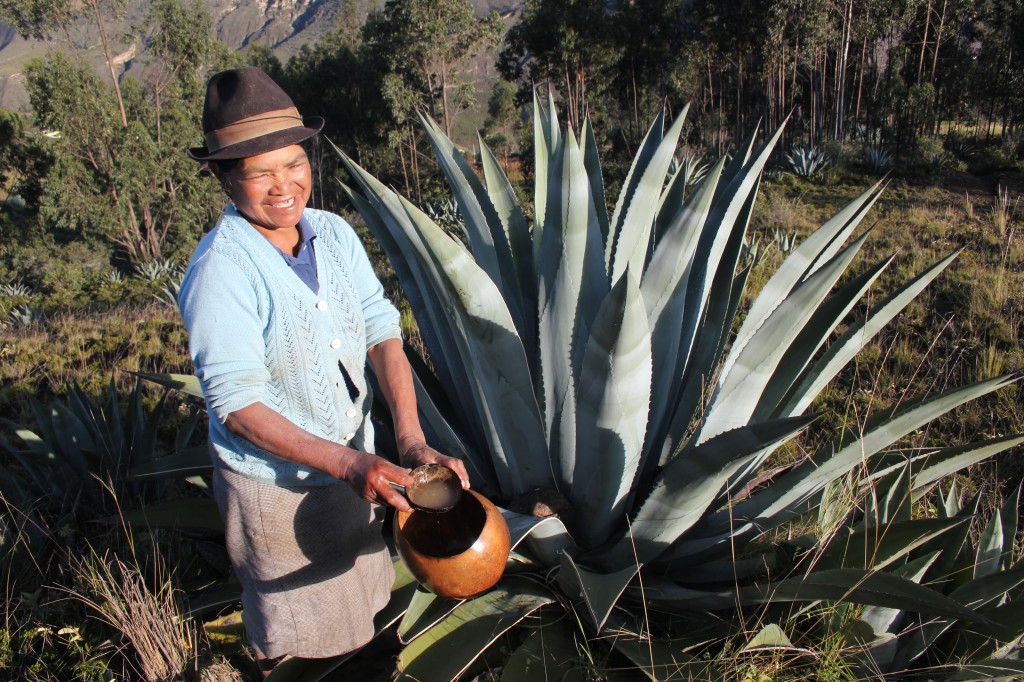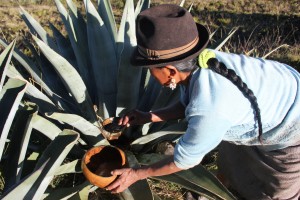I’ve always been amazed at how my Ecuadorian grandmother managed to attend to her nine children, a husband, and many daily guests without the many tools and resources available today. My grandmother managed not only to make sure they were all fed, but she managed to keep them and herself happy in the process. She made things from scratch that we usually buy, like butter, yogurt, and flours, and even jello, which is harder to imagine coming from any place other than a box with “just-add-water” instructions. Among all these, I specifically remember hearing about the delicious “miel de penco” (agave honey), which she used to extract and then blend with barley flour and milk into a thick mix my mom used to call “chapo.”
I grew up listening to these stories but saw, and savored, very few of these things myself. My mom was daughter number eight and had me in her thirties, so my memories of my “abuelita” are of an older woman who could no longer spend much time in the kitchen. None of my aunts or uncles carried on the traditional ways of my abuelita, so I had the stories, but without the flavors. But recently at a farmers’ markets in Quito, I saw my mother emerge from a small stand with a look of excitement on her face a bit like the one my baby daughter had when she first discovered her toes. “Miel de penco!” she screamed out as she held the jar up high to catch my attention. She had found a lost childhood treasure and couldn’t wait to show it to me.
My mom was holding a jar of black agave syrup, Mishky Huarmy’s “Chaguarmishky”, a wholesome effort to bring back a healthier sweetener and conserve a centuries-old cultural heritage. Gabriela Bonifaz started this family business that works with Cayambi indigenous women, strengthening community producers and paying a premium price for the agave’s sap, extracted in traditional ways. Mishky Huarmy aims to help Cayambi women feel pride in their heritage and traditions again by bringing back this vanishing traditional syrup, and in the process bringing joy to people like my mother and me. Emphasizing the importance of origin and instilling pride in its producers, each jar is marked with the name of the community and the initials of the woman who extracted the sap.
Displaced by commercial sweeteners and globalization the tradition of making and consuming Ecuadorian agave syrup, a practice known since pre-Incan times, has dwindled. And this is not just a cultural loss. The syrup is traditionally associated with many health benefits, and the native agave plants which produce it prevent soil erosion and help restore soils so that once eroded mountainous ecosystems can support native and endemic fauna and flora again. “Chaguarmishky” agaves thrive on poor soils, making otherwise marginal lands productive and avoiding the need for fertilizers – resulting in a product that is organic by nature.
Chaguarmishky allowed me to add a flavor to my grandmother stories, and a new culturally and nutritionally rich alternative for my family’s cravings – something I enjoy even more since I know exactly where it comes from, who made it and what its impacts are. Be sure to check Mishky Huarmy’s wholesome syrup and other products, along with other Andean treasures on Canopy Bridge.
By Karina Bautista – Canopy Bridge




Amazing, Very good Kari. This remember me, my chidhood. We use to ate so heathly. To conserve our planet, we need to return to those times, we have to return to the land, to the nature, to the beautiful and simple things of the life.